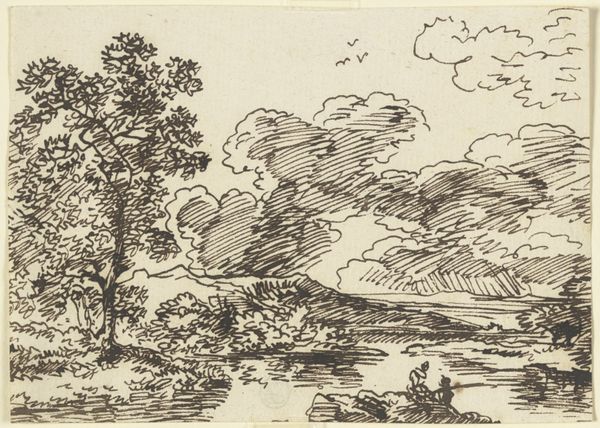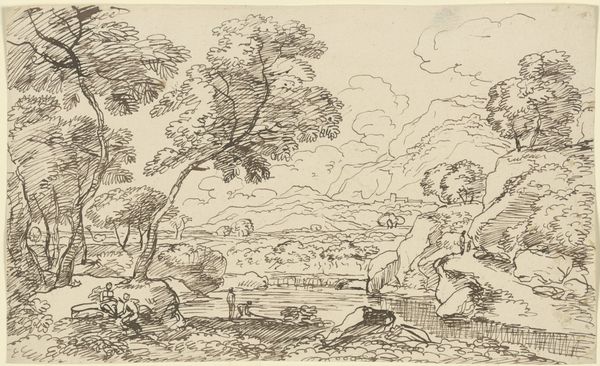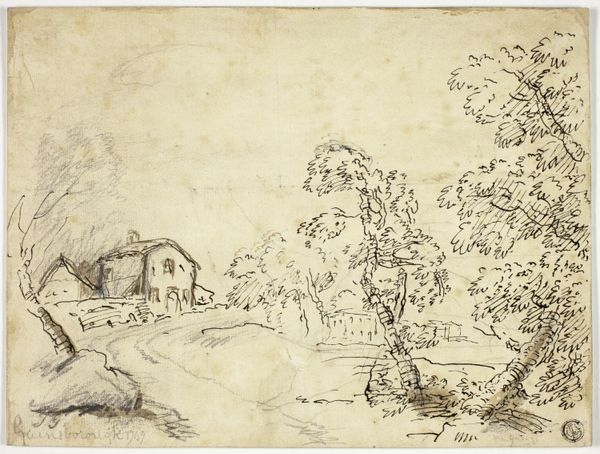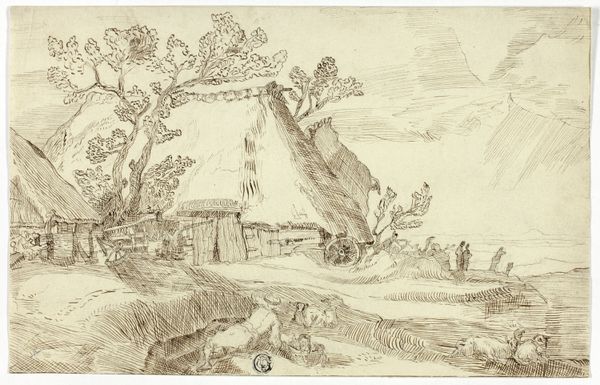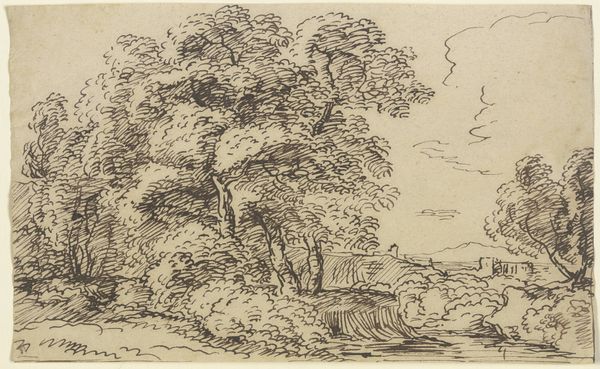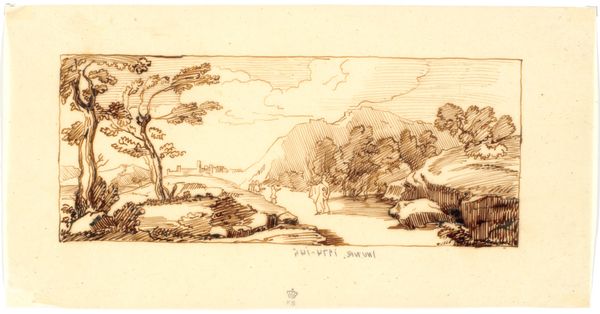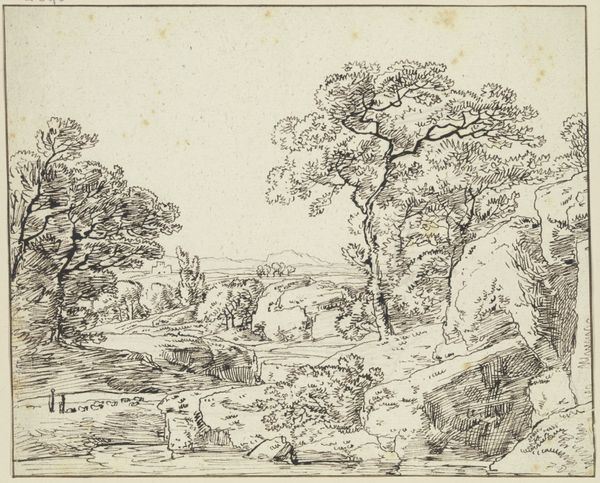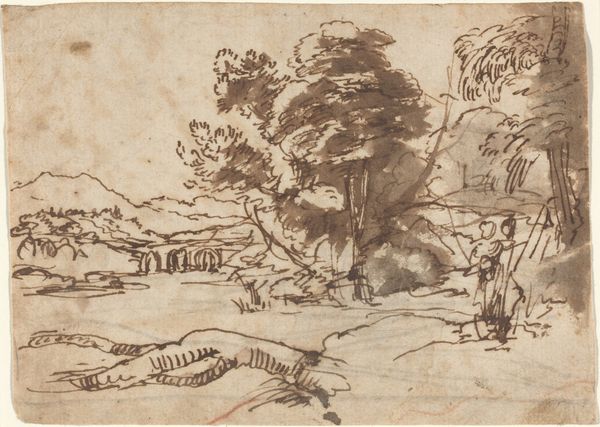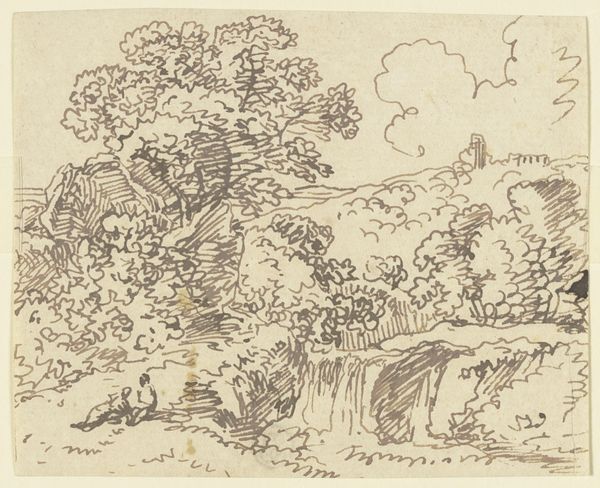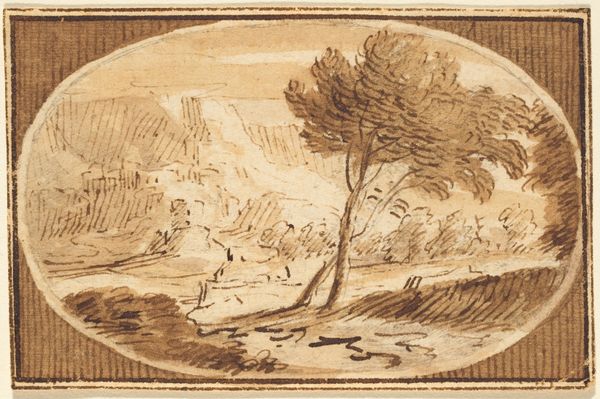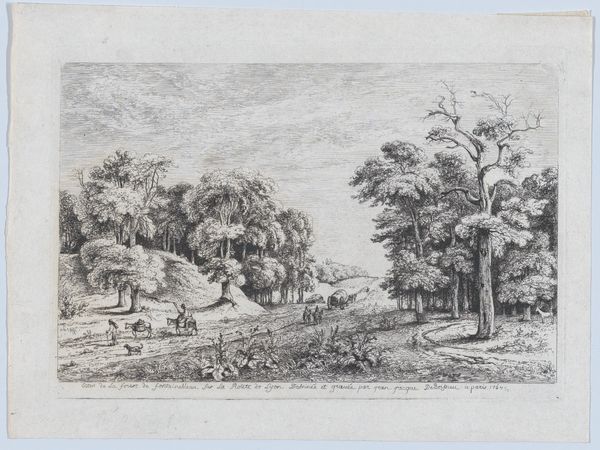
drawing, ink
#
drawing
#
baroque
#
ink painting
#
landscape
#
ink
Dimensions: overall: 11.5 x 18.1 cm (4 1/2 x 7 1/8 in.)
Copyright: National Gallery of Art: CC0 1.0
Curator: Before us, we have a sepia ink drawing called "At the Dram Well," dating back to the 17th century, created by an anonymous artist. The landscape depicts figures gathering around a well, all rendered in delicate strokes of brown ink. What is your immediate response to this piece? Editor: There's a haunting serenity about it. The monochromatic tones create this ethereal, almost dreamlike state. The figures seem so small against the vastness of the landscape, making me wonder about their role and purpose. There’s definitely something more than meets the eye here. Curator: Indeed. This work, reflective of Baroque sensibilities in its dramatic lighting and emotional intensity, reveals much about the socio-political structure of the time. Notice the prominent well, a communal gathering point, possibly revealing how rural life was organized around these critical resources. Editor: It also highlights the essential nature of water, a resource often controlled and politicized. In our present, where access to clean water remains a critical human rights issue, a simple scene like this carries additional weight. The communal well speaks volumes about dependency and potentially inequality. Curator: Precisely! Further, this piece fits within a broader history of landscape art being used to signal ownership, control, and dominance over natural resources. In looking at these kinds of works we need to consider their impact in visually asserting particular ideas of land ownership. Editor: And even ideas of labour. Are these people labourers using the well? Or merely socializing there? The image isn’t forthcoming. This anonymity—both of the artist and the depicted people—pushes me to consider how their identities may or may not reflect the power structures operating at the time. Class, for instance, and gender – we know fetching water has been a traditionally gendered role. Curator: A potent point! Its beauty draws us in, but art must challenge us to confront uncomfortable histories and issues around inequitable access to vital resources like water. Editor: Agreed. "At the Dram Well" is much more than a tranquil landscape. It becomes an invitation to examine historical power relations and our continued struggle for environmental and social justice.
Comments
No comments
Be the first to comment and join the conversation on the ultimate creative platform.
